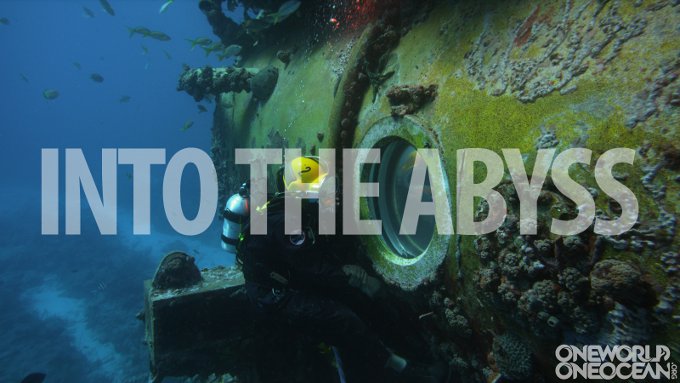We have a great post lined up for this Friday with everything from amazing to just odd and something in between. We lead off this edition with a breaking story about deep sea squids that actually tear its arms free in a fight. The Octopoteuthis deletron, can actually amputate its own arms in a fight leaving an arm tip flail about for at least 10 seconds, while glowing vigorously from the light-producing organs at their tips. This odd behavior is being studied by Stephanie Bush from the Monterey Bay Aquarium Research Institute who has been studying this squid for the last decade. This is definitely worth a read and for a creature with ‘Deletron’ as part of its name, flying arms is definitely a cool super power.
[via io9]
We may have a slight obsession with robotic sea creatures and this one definitely got our juices flowing. Here is a display aquarium filled with robotic fish. We are definitely just missing a few lasers mounted to these robofish to turn them into the perfect aquatic army for Dr. Evil.
Thanks to Stephen Spielberg pretty much everyone has the fear of sharks when heading to the beach and this group of surfers in Australia got a big surprise when then notices a group of sharks devouring a dead whale just a few meters from shore. As surfer Rachel Campbell wrote on her blog about this incident, “Before long I realized there were about 100 sharks in total, some as long as 4m, all in a frenzy over fresh whale flesh.” Pretty crazy! Just so you hardcore surfers know, despite all the sharks Campbell and friends hit the water 1.5 kilometers off shore for some shark-free surfing.
[via io9]
Nudibranchs have some of the most vivid colors in the marine world and acclaimed underwater Photographer David Doubilet put together a great series of these wondrous sea slugs and the bright coloring used as an act of beautiful self defense. These creatures have no shell or exoskeleton to protect themselves, only armed with this technicolor dreamcoat to tell predators to “Back the #$&% up!!!” Make sure you check out the incredible portfolio over at NatGeo.
[via Fstoppers]
Here is a great, informative clip about the work Ken Nedimyer is doing with the Coral Restoration Foundation. Tag along as Ken and the team head out to replant second generation Elkhorn coral in the wild off the coast of Florida. This venture was sponsored by both Boyd Enterprises and Ecotech Marine and definitely a worthy cause. Now go buy some Chemi-Pure Elite and a Vortech so we can support CRF more!
We all know about the outer space program but what about inner space? Sure the astronauts get all the fun, cool gadgets and notoriety but don’t forget about the aquanauts. Every wonder how humans managed to explore the undersea world for long periods of time? Follow along this story about the undersea version of a space station. Here is how decades of scientific and technological breakthroughs led these pioneering divers to the mission taking place at the Aquarius Reef Base today.
[via Gizmodo]

These little pests have plagued hobbyists for years wiping out many a wonderful Acropora colony but before were thought to just be limited to the aquarium world but the Acropora eating flatwormhas been reported be seen in the wild — on Australia’s Great Barrier Reef no less. The find is reported in the journal PLOS ONE recently. The flatworm, Amakusaplana acroporae, is a voracious predator. “They take small bites of the coral tissue and also lay eggs directly onto the coral and when those eggs hatch then you’ve got 20 new worms that are also eating the coral,” says marine biologist Jessica Stella, of James Cook University in Townsville. She says for the past 10 years the worm has plagued aquariums and reef restoration projects but has never before been found in the wild.
[via ABC Science]
Last but not least, does the phrase “holy whale poo!” just make you cringe? Well if you ever wanted to see how much excrement an 80 ft. long blue whale would produce? Check out this image captured by Eddie Kisfaludy shot this scene from a plane off the coast of La Jolla, California this week. That orange streak the size of a few cars is what the whales produced after snacking on a bunch of krill. For anyone that loves to feed their fish Carotenoid-rich products like Cyclop-eeze may recognize the color but OMG, look at the size of that skidmark! Would definitely have to happen to be a diver, swimmer or jetskier who happens to roll through that poo!
[via io9]






